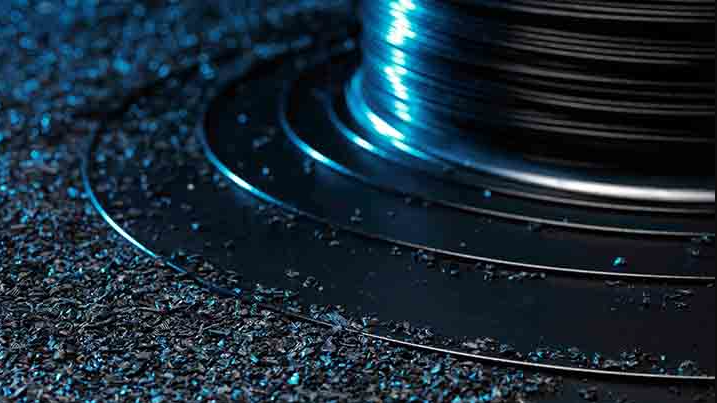When it comes to 3D resin printing, the first step is to create a 3D model of the object you want to print. This requires 3D modeling software that can create a digital 3D model. There are various software options available in the market that are specifically designed for 3D modeling for resin printing.
The best CAD software for a beginner depends on the individual’s preferences and specific needs. However, some CAD software options are generally considered to be more user-friendly and easier to learn than others.
Tinkercad is a popular CAD software that is ideal for beginners. It is a free, web-based software that is easy to use and offers a variety of tools and features for designing 3D models. Tinkercad also offers tutorials and a community of users who can help you learn and troubleshoot any issues.
SketchUp is another user-friendly CAD software that is easy to learn and use. It offers a wide range of tools for creating 3D models, including simple shapes and complex geometries. SketchUp also has a large community of users and online resources for learning and troubleshooting.
The time it takes to learn CAD software can vary depending on the individual’s prior experience and skill level. With a dedicated effort, a beginner can become comfortable with the basics of a software like Tinkercad or SketchUp in a few weeks to a few months. However, mastering the more advanced features and capabilities of a software can take much longer and requires continued practice and experimentation.
For more advanced users, there are options like Blender, which is a powerful open-source 3D modeling software. It offers a wide range of tools for creating complex 3D designs, including sculpting, animation, and rendering or Fusion 360. Fusion 360 is a professional-grade CAD software developed by Autodesk. It offers a wide range of tools and features for designing complex 3D models, including mechanical parts, architectural designs, and more. It is available for free for personal use and for small businesses with annual revenue under a certain threshold.
Blender – free and open-source 3D creation suite that includes CAD functionality.
Fusion 360 – powerful 3D CAD/CAM software for product design and manufacturing
When choosing a 3D modeling software for resin printing, it is important to consider the level of experience, the complexity of the design, and the required features. It is also important to ensure that the software is compatible with your resin printer.
Preparing a SD Card
To use an SD card with a 3D printer, you will first need to ensure that the printer is compatible with SD cards. Most 3D printers, including resin printers, come with an SD card slot where you can insert the card.
Setting up a Resin 3d printer SD Card:
- Save your 3D model as an STL file on your computer.
- Insert the SD card into your computer’s SD card reader.
- Transfer the STL file to the SD card.
- Eject the SD card from your computer and insert it into the 3D printer’s SD card slot.
- On the printer, navigate to the SD card menu and select the file you want to print.
- Start the print and monitor the progress.
To find files for 3D designs, there are several options available. You can create your own 3D models using CAD software or download pre-made models from various online marketplaces or repositories.
Some popular websites where you can find 3D designs for resin 3d printers include Thingiverse, MyMiniFactory, and Cults 3D. These websites allow users to download and share 3D models for free or for a fee, depending on the specific design and licensing terms.
Thingiverse: Thingiverse is a community-driven platform for discovering, sharing, and creating 3D printable designs ranging from toys to functional parts.
MyMiniFactory: MyMiniFactory offers a large library of 3D printable models, with a focus on quality, originality, and user experience.
Cults 3D: Cults 3D is a marketplace for 3D printable designs featuring a large variety of categories from jewelry to art to engineering.
Easy 3D Resin Projects for Beginners
There are many things that a beginner can print with a 3D printer. Here are a few ideas for artistic, educational, and useful items:
Artistic:
- Customized phone cases or laptop stands
- 3D printed figurines or sculptures
- Jewelry, such as earrings or necklaces
- 3D printed art pieces, such as vases or frames
- Decorative items like planters or candle holders
Educational:
- Topographic maps or other geographic models
- 3D puzzles or brain teasers
- Models of molecules or cells for biology or chemistry lessons
- Models of ancient buildings or artifacts for history lessons
- 3D printed musical instruments or experiment equipment
Useful:
- Replacement parts for broken household items, like knobs or clips
- Customized phone holders or stands
- Small storage containers or organizers
- Keychains or luggage tags
- Simple tool handles or custom jigs for a specific job
These are just a few examples, but the possibilities for 3D printing are almost endless. As beginners become more experienced and comfortable with the technology, they can move on to more complex projects and designs.
In summary, choosing the right 3D modeling software is a crucial step in the resin printing process. With the right software, you can create intricate and detailed 3D designs that are ready for printing.





